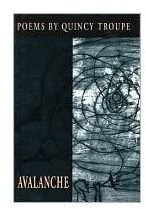Lesson Plan: Poetry Analysis of Quincy Troupe
Discuss Quincy Troupe’s Life
This author went down an unusual career path to becoming a poet, including playing in foreign basketball leagues. Discuss why people make career changes and talk about how many different careers a person may have in one lifetime. Quincy Troupe is now a poet and writer who lives in Harlem, New York, and LaJolla, California. He was a professor at University of California-San Diego as well as Columbia University.
“A Poem for Magic”
This poem is a tribute to the feats of Magic Johnson, NBA player, and, true to its name, It will help students see the magic of poetry. It
has amazing rhythm and a joyous spirit of athleticism. Even students who are typically unenthusiastic about poetry will be eager to talk about this poem. It is a fun poem to have students read aloud; their enthusiasm is readily apparent as they present the poem to the class.
Imagery in “Poem for Magic”
- “Dazzling down the open lane”
- “Spooky takeoff of yours”
- “Your legs scissoring space”
- “You double pump through human trees”
- “Dunkathon magician passes”
There are many unique uses of imagery in this poem. The author has a whimsical way of melding words to create a new word of his own. Ask students which words and images seem most important to the poem. Are there any words they do not understand? Also discuss the use of personification and similes in the images.
Ask students to pick one use of imagery and write one to two paragraphs explaining the meaning and significance of the image. How does the phrase impact the overall meaning of the poem?
“Let’s Say You Are Who”
This poem is full of strong description and imagery and personification. Some interesting phrases include:
Imagery in “Let’s Say You Are Who”
- “yellow light burning delirium”
- “cat-quick eyes”
- “sad sack dancing ghost”
- “blooming storm clouds”
- “some fly homeboy”
- “in the middle of a sentence of history”
- “werewolf metaphors in his voice”
This intense poem intrigues students. It presents themes of image in society, self knowledge, impact of crime, and life and death. It is full of realism and graphic images of death.
“La Jolla”
This poem provides lush description of nature and also images of the harsh reality of modern life. Ask you student, what are the popular images of California? Does this poem support or contradict those images?
Other questions include: What imagery is most vivid in the poem? Why? Why does the author choose to discuss both the beauty and the fears of people in the area?
Discuss the imagery in key phrases (examples below). Write five examples of imagery about the state of California or any other state of their choice.
Imagery in “La Jolla”
- “sunsets leave vivid stains”
- “plunging ocean of flight”
- “green light luminous with complexions”
- “nervous people behind walls”
Have Students Try Their Own Hand
Quincy Troupe’s poems encompass a broad range of themes. He discusses sports, nature, aging, love and a myriad of other topics. Students will learn much about realism, imagery, personification, and similes by reading Troupe’s poems.
To assess learning after the lesson about the poems of Quincy Troupe ask students to create a poem using both imagery and realism. Tell them to include at least three examples of similes. Another assessment idea is to take one word from one of Troupe’s poems and use it as the title of a new, original poem.
Sources:
“Avalanche:Poems by Quincy Troupe” Coffee House Press, Minneapolis, MN., 1996.
Quincy Troupe on www.Poets.org
